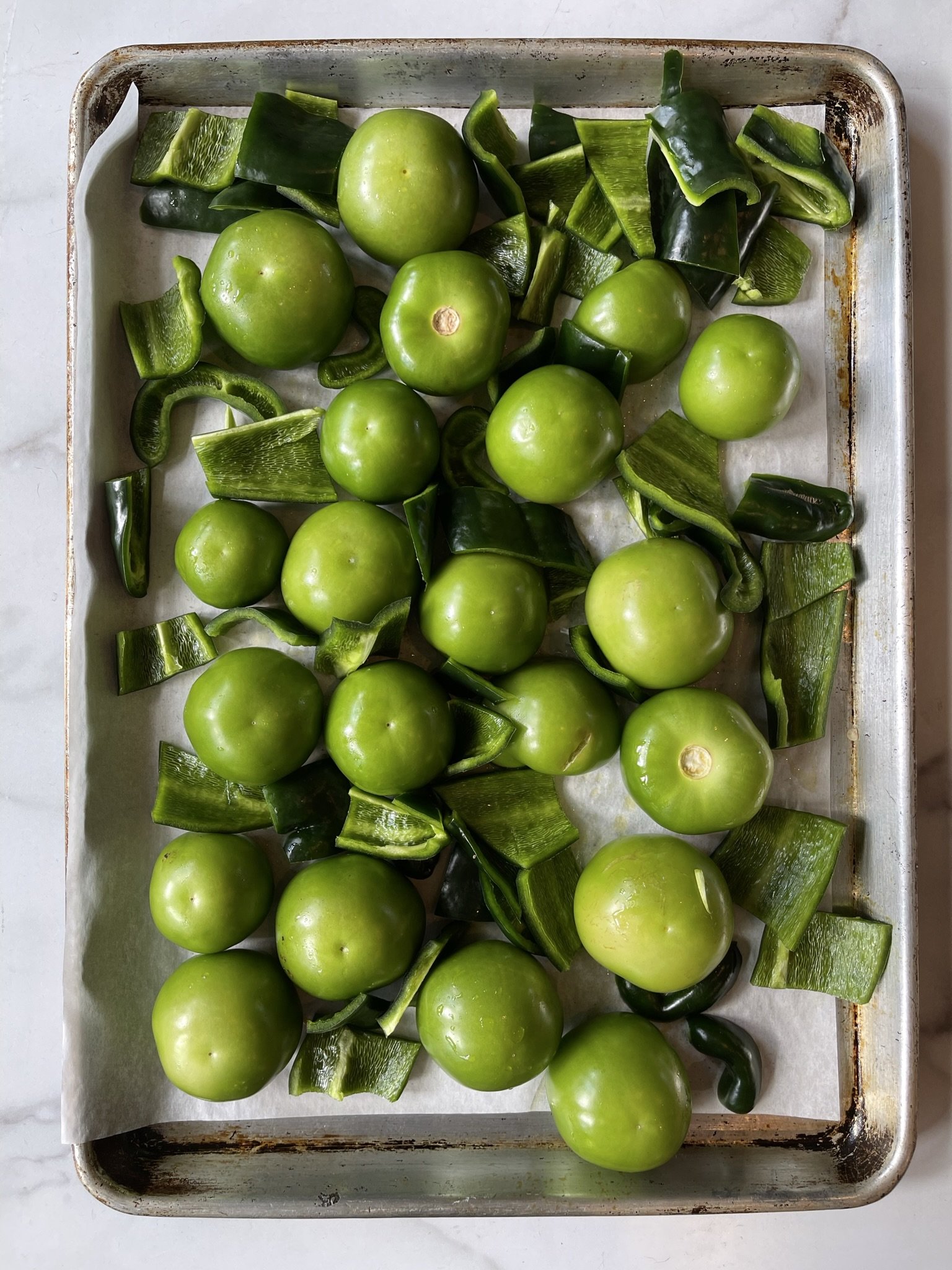Remembrance of Meals Past
In the dead of winter, I found myself craving something green. Not the leafy green of kale or spinach, nor yet the soft shoot green of Spring peas. My stomach searched my memory…found something tart, but full of roasted flavors. The craving took shape. It was the hale and hearty green of pozole verde: a Mexican soup rich with chicken, redolent with garlic and onions, more plucky than spicy. And the green, which I hoped would ward off anything coming my way—be it COVID or seasonal affective disorder—was the unmistakable green not of poblano or jalapeño (though they would play their parts) but of a closely related vegetable.
Enter the tomatillo. Known by a constellation of nicknames (“husk cherry,” “jamberry” etc.) when known at all, this little green nightshade illuminates countless Mexican dishes. Covered with a sticky sap, the plump green flesh comes wrapped in a paper-like shell called a calyx. As it is rarely cultivated outside of Central and South America, the tomatillo tends to give gringos ‘exotic’ vibes. While the tomato (a botanical cousin) enjoys worldwide familiarity, the tomatillo strikes many as odd—hence the proliferation of explanatory articles. Bearing in mind the staggering statistics—30 crops supply 95 per cent of the calories that people obtain from food—I consider every ‘weird’ fruit or vegetable a potential gateway to dietary diversity. Luckily, many of my local grocery stores carry them.
Before going further, an admonishment: the Mexican food of Southern California is best experienced in situ. However, aspects of any cuisine are reproducible to some extent. This is often where the messy notion of food “authenticity” enters the conversation. Brooklyn Water Bagel, a Florida chain, uses a proprietary water treatment process to create its New York style bagels. Filomena Ristorante in Georgetown conspicuously employs grandmotherly women, who can be seen in the storefront window making pasta by hand. Taco Bell’s chihuahua mascot spoke in a very convincing Mexican accent. Authenticity, paradoxically, can mean whatever you want. It is often a buzzword, good for selling an inferior product by giving it the impression of something special. Sometimes it reflects the kind of ethos that drives creators to make truly beautiful products. For my own purposes, in my own kitchen, chasing my own (often misremembered!) food cravings, I dispense with the notion. What I wanted was like pozole verde…but not quite. What I wanted was a vague impression of a food I’ve only had a handful of times. A pozole verde of the mind, triangulated from internet recipes and my own memories.
First I removed the tomatillos from their husks and rinsed them. I put them on a sheet pan with some cut up poblano peppers and roasted in a hot oven until brown and burst.
Pureed in a blender, this became the base for the soup. To this base I added garlic, onions and whole chicken thighs and let it simmer for an hour or so, till the chicken was fully cooked and ready to shred. I shredded the chicken, removing the bones, corrected for seasoning (more lime!) and got my toppings ready. This set-up follows the famous Chili Bar Theorem—allow each diner to customize her bowl and you, the cook, will earn more praise.
Food cravings obey no discernible law. Sometimes a memory activates the salivary glands. But a mouthwatering photograph of something bizarre, hitherto unheard of, can produce the same result. Whatever patterns exist do so in a state of flux based on the time of day, alcohol, mood, and myriad other factors. Pregnancy rewrites the patterns entirely. The physical reality of our bodies—in time, space, and various states of hunger—bind these flights of fancy to the material world. I myself live in Lancaster County, Pennsylvania. And while it is where I grew up, where many of my own food cravings began, it is not the only place I have eaten. My desire is the map of my life’s travels: squid ink pasta (the D.C. restaurant where I met my wife), tacos al pastor (when we lived in San Diego) and Bún riêu (our honeymoon in Vietnam). But more often than not, living here means having little access to the kinds of foods that can scratch a particular itch. The solution is always the same: stop daydreaming and start cooking.






